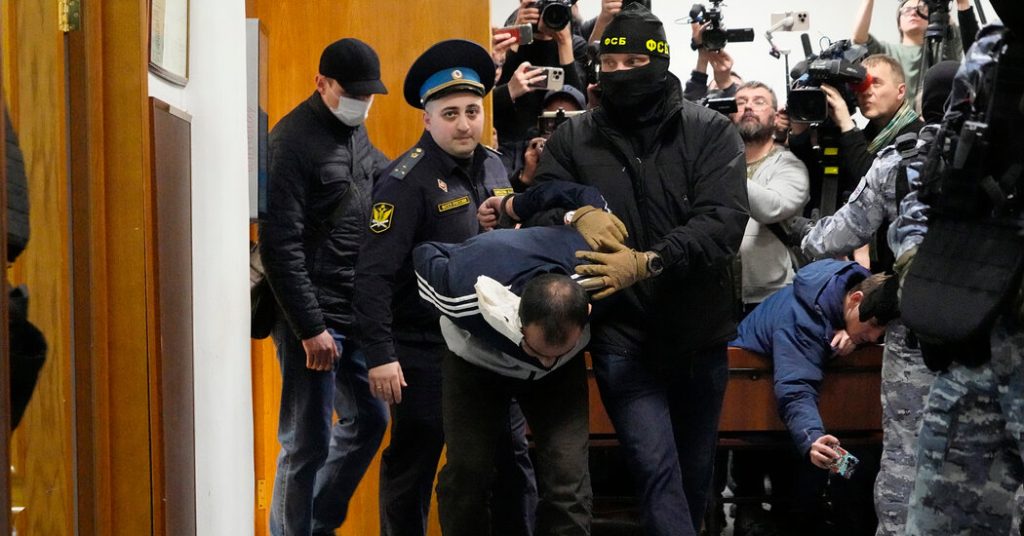Four men accused of carrying out Russia’s deadliest terror attack appeared in a Moscow court in a battered and bandaged state. The videos of the men being tortured during interrogation were widely circulated on social media, showing gruesome acts of violence against the defendants. These videos were spread by nationalistic channels close to Russia’s security services. The decision to showcase the torture in court was seen as a sign of revenge and a warning to potential terrorists.
The display of torture on state TV was unprecedented in Russia’s recent history, signaling a shift towards a more militarized society that is tolerant of violence. The torture videos were intended to deter potential attackers and show that revenge will be exacted for terrorist acts. The public acceptance and normalization of violence in response to the war in Ukraine have contributed to this shift in attitudes towards torture and brutality in Russia.
Former President Medvedev expressed support for the capture of the suspects and advocated for their execution, as well as anyone else involved in the attack. The use of torture has long been a tactic in terrorism cases, serving as a form of prevention and deterrence against potential offenders. The progressive desensitization of the public to violence has made such displays of torture more acceptable and less shocking to society.
Torture is a crime under international law, and defense lawyers typically seek to have evidence obtained through torture dismissed as unreliable. Trials of extremists in Russia are usually closed, making it difficult to challenge the use of torture in obtaining confessions. The officials involved tend to ignore objections from defense lawyers, and judges often carry out sentencing as expected, demonstrating a lack of impartiality in the legal process.
The brazen display of the battered suspects in court was criticized for turning the trial into a spectacle, showing little regard for the defendants’ rights and dignity. The torture inflicted on the suspects and the official response to it sent a signal to the military and security services that extreme violence was acceptable and encouraged. The release of torture videos aimed to intimidate those who oppose the Kremlin while also sending a message of approval to the security forces.
Activists and journalists called for condemnation of both the terrorists and the use of torture against them, emphasizing that torture is never justified or acceptable, regardless of the circumstances. The normalization of violence and the public acceptance of torture as a means of punishment pose a grave threat to human rights and civil liberties in Russia. The ordeal of the defendants in the court hearings shed light on the country’s slide towards a more authoritarian and brutal society.


